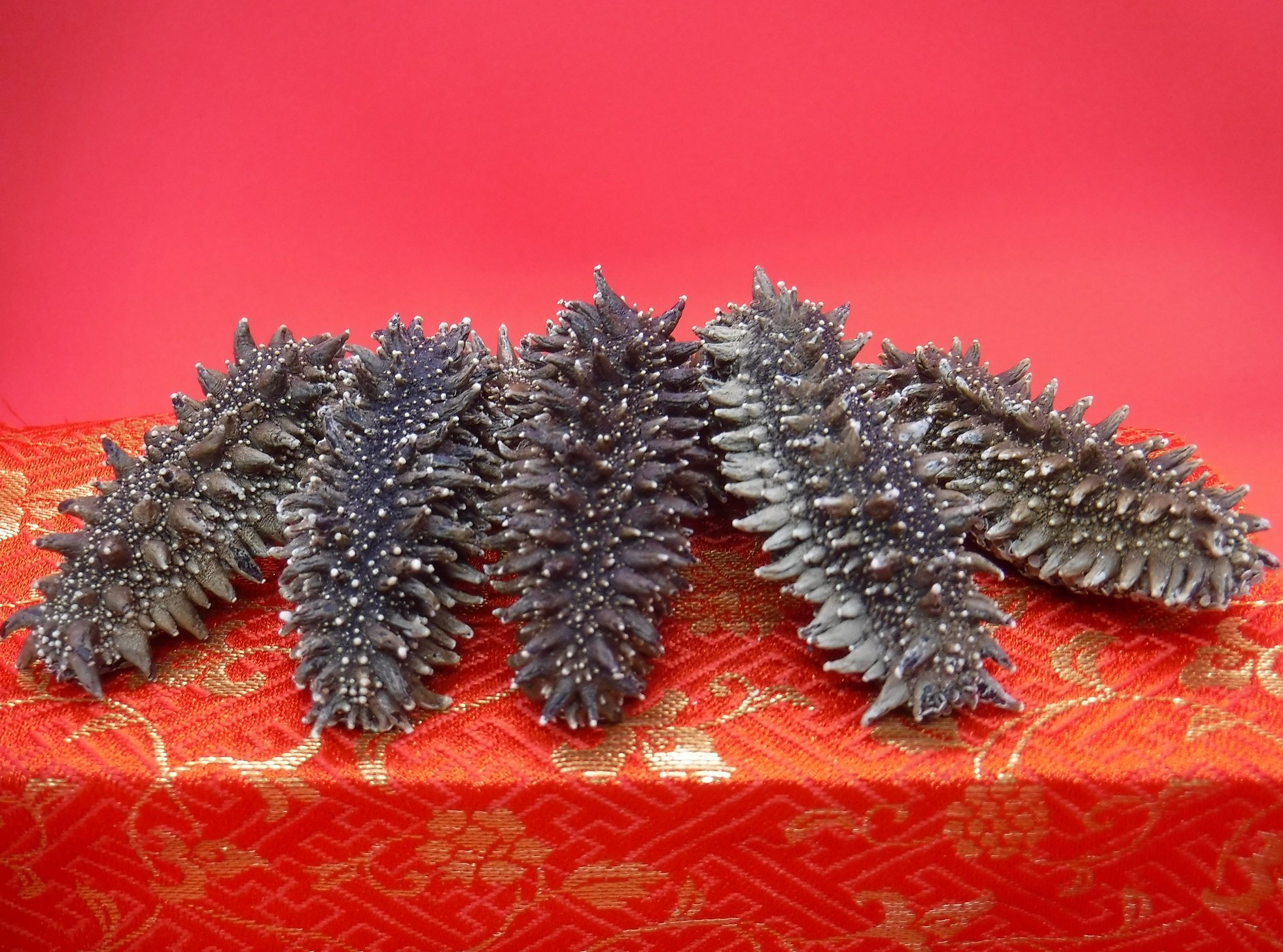Hiyama Haishen
| Registration Number | 92 |
|---|---|
| Name of the GI | Hiyama Haishen |
| Class | Processed Foodstuffs |
| Date of Protection | 2020/03/30 |
| Producing Area |
Hokkaido
Setana Town, Kudo County, Yakumo Town, Futami County, Otobe Town, Nishi County, Esashi Town and Kaminokuni in Hiyama County, and Okushiri Town, Okushiri County |
| Applicant - Name and Address | Hiyama Fisheries Cooperative 520 aza Motomachi, Otobe Town, Nishi County, Hokkaido |
Producing Area
Hiyama Haishen is dried sea cucumber made from sea cucumber caught in the seas off the producing area and processed in the same area. It is characterized by superior appearance covered with spikes. It takes on a good shape even when rehydrated, has thick meat that maintains its shape when cooked, has moderate stickiness and elastic texture, and is easy to cook.
Hiyama Haishen corresponds to the category of ci-shen, a highly valuable dried sea cucumber in Chinese cooking, and is highly appreciated by customers dealing in Chinese cooking ingredients.
Hiyama Haishen is made from sea cucumber caught without using fishing net, such as dredge (excluding spoon net), in seas off Hiyama region in Hokkaido. Only sea cucumber that is kept alive until just before preprocessing is used as its raw material.
As preprocessing, the abdominal surface is cut to remove the intestine and sand/mud, before being washed clean with fresh water or sea water.
It is then boiled in fresh water, transferred to a strainer to cool, and the remaining internal organs are removed before boiling again in fresh water. The temperature of boiling water and the boiling time are adjusted according to the size of sea cucumber, and salt curing is not performed after boiling.
Once cooled, it is placed on a dryer table and dried by any of the following methods: sun drying, fan machine, or vacuum freezing.
As shipping standards, sea cucumbers that fall under any of the following conditions are not shipped as Hiyama Haishen;
- sea cucumber bends when pushed with a finger due to insufficient drying;
- it has mold or smells spoiled;
- it lacks the appearance of being covered with spikes; and
- it is excessively filleted, deeply flawed, or otherwise has remarkably poor overall appearance.
The seas off the coast of producing area are a suitable habitat for sea cucumber with many reefs and adequate amount of sands.
This area has a long history of producing dried sea cucumber, and a record remains of the area as the producer of dried sea cucumber used in tawaramono (straw baled goods) (1), goods traded to Qing, in the Edo period(2).
In this region, sea cucumber fishermen and their families have been involved in the production, and have maintained the procedure of carefully drying fresh sea cucumber without salt curing.
In 2014, volunteer fishermen began efforts at restarting joint processing, including production of samples and distribution of these samples to develop sales channels. In 2017, full-scale production and sales of Hiyama Haishen resumed based on joint processing by fishermen.
As of Fiscal Year 2019, annual production is at approximately 100 kg (dry weight), with a production value of 23 million yen.
- Tawaramono (straw baled goods): Refers to marine products (dried foods) exported to Qing (present-day China) in the Edo period as trade goods, such as irinamako/iriko (dried sea cucumbers), hoshiawabi (dried abalones), and fukahire (shark fins). These products were exported in tawara (straw bags), hence the name.
- The Edo Period: 1603-1867. It is a period of Japanese history characterized by the establishment of a shogunate (feudal military government) in Edo (now Tokyo). Political administration under the Tokugawa clan began when Tokugawa Ieyasu became the era's first shogun.


